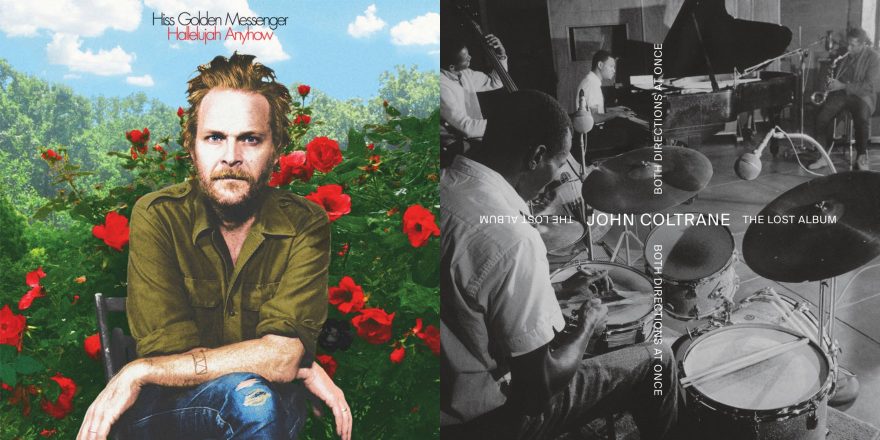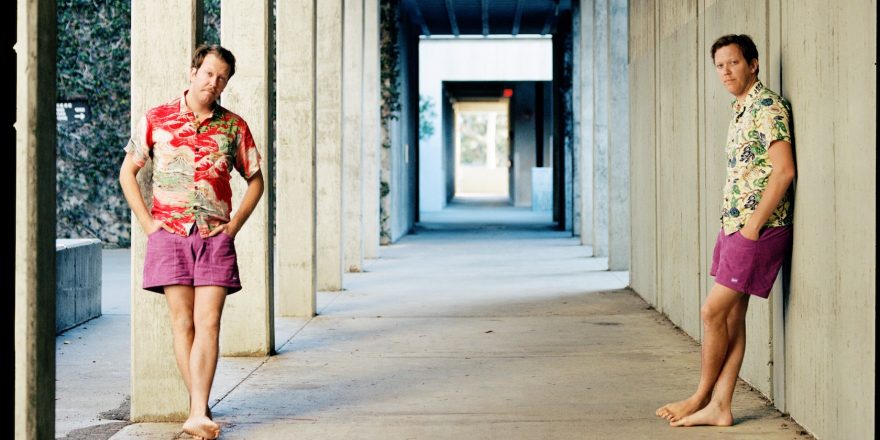John Coltrane repeating himself would be like snow falling up. His work is defined by forward momentum, champing at the bit for the next boundary to shatter. When he decided that chord-based bebop was too restrictive, he ditched scales for modes on 1961’s Africa/Brass and helped invent a new vocabulary for jazz. 1965’s Live in Seattle and Om were tracked within two days. During his final shows, as if he had wrung every drop of feeling out of his horn, he sometimes stopped playing, beat his chest and moaned like a spectre.
We don’t often hear Coltrane revisit originals that he’s already recorded. Sure, he revisited standards like “My Favorite Things” many times onstage, but only to feed them further into the avant-garde thresher, never to “get back to his roots.” By 1964, he had left behind the blues-and-ballads style of “Traneing In,” “Naima,” and “Like Sonny,” all recorded between 1958 and 1961. But that year, he decided to give them all one more go — and we can hear it on Blue World, a new lost-and-found Coltrane album.
The story goes like this: Between 1964’s Crescent and A Love Supreme, Coltrane was asked to soundtrack Gilles Groulx’s forgotten French Canadian film Le chat dans le sac (or, “The Cat in the Bag”). He stepped into the studio with pianist McCoy Tyner, bassist Jimmy Garrison, and drummer Elvin Jones — and for once, he didn’t try to reinvent the wheel. Instead, he dipped into material from years past. He seems to roll the melodies over in his mouth, blowing them as he feels in the now.
Blue World is all about quiet-but-telling moments that show how he’d developed in a few short years. It begins with a run-through of “Naima,” a delicate ballad written for his first wife, Naima Juanita Grubbs, in 1959. When he recorded it for 1960’s Giant Steps, they were happily married and living on 103rd and Amsterdam; by the time of Blue World, they had separated.
“He didn’t offer any explanation. He just told me there were things he had to do, and he left only with his clothes and his horns,” Grubbs said in J.C. Thomas’s Chasin’ the Trane. “All he said was, ‘Naima, I’m going to make a change.’” Here, “Naima” sounds sadder and richer than ever; he ends the theme with a restless little curlicue.
“Like Sonny,” too, benefits from another run-through. I’ve always heard the original, from 1961’s Coltrane Jazz, as played a little too straight, like bassist Paul Chambers and drummer Jimmy Cobb are content to play the blues while their leader wrestles out of its binds. By Blue World, his quartet had caught up to him; drummer Elvin Jones plays “Like Sonny” in a shifting-sands style that breaks the song open.
Hearing Coltrane inquire into his old work — which I thought he never did — has been inspiring me to do the same. Most of my albums as Other Houses were recorded in my early 20s with me playing every instrument into a four-track recorder, all in the name of song-first immediacy. I’m proud of all of my albums, as they’re what I wanted to do at the time. But given the opportunity, I’d re-record nearly all of them.
“Ladies of the Aeon” is a good power pop song that deserves more than half an hour of production work. “Venus Violin” could use real violins, not cheapo MIDI ones. Fortune Selector and Funny Papers, recorded with full bands, captured livewire moments with close friends; I wouldn’t touch those. But I admit my self-recorded albums came together too quickly to have much longevity. When I finally set up a studio in my new basement, I plan on doing some major song renovation.
Granted, I don’t play jazz, and I’ve never made anything of Coltrane-level consequence. But there’s a tremendous gulf between me at 22 and me at 27. I’ve lived, thought, and listened more, and I’m a better musician now in every conceivable way. I can’t say with certainty what was going through Coltrane’s mind on Blue World, but his reexaminations are inspiring me to pick up a pen, strap on my guitar and start again.







